Robin Kips
From Sparse Signal to Smooth Motion: Real-Time Motion Generation with Rolling Prediction Models
Apr 07, 2025Abstract:In extended reality (XR), generating full-body motion of the users is important to understand their actions, drive their virtual avatars for social interaction, and convey a realistic sense of presence. While prior works focused on spatially sparse and always-on input signals from motion controllers, many XR applications opt for vision-based hand tracking for reduced user friction and better immersion. Compared to controllers, hand tracking signals are less accurate and can even be missing for an extended period of time. To handle such unreliable inputs, we present Rolling Prediction Model (RPM), an online and real-time approach that generates smooth full-body motion from temporally and spatially sparse input signals. Our model generates 1) accurate motion that matches the inputs (i.e., tracking mode) and 2) plausible motion when inputs are missing (i.e., synthesis mode). More importantly, RPM generates seamless transitions from tracking to synthesis, and vice versa. To demonstrate the practical importance of handling noisy and missing inputs, we present GORP, the first dataset of realistic sparse inputs from a commercial virtual reality (VR) headset with paired high quality body motion ground truth. GORP provides >14 hours of VR gameplay data from 28 people using motion controllers (spatially sparse) and hand tracking (spatially and temporally sparse). We benchmark RPM against the state of the art on both synthetic data and GORP to highlight how we can bridge the gap for real-world applications with a realistic dataset and by handling unreliable input signals. Our code, pretrained models, and GORP dataset are available in the project webpage.
XR-MBT: Multi-modal Full Body Tracking for XR through Self-Supervision with Learned Depth Point Cloud Registration
Nov 27, 2024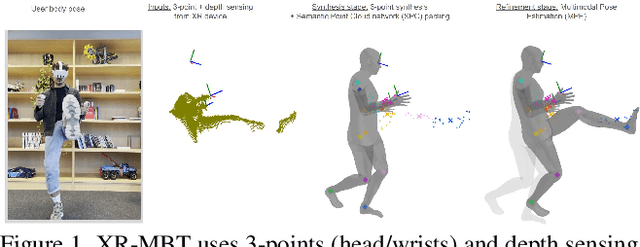
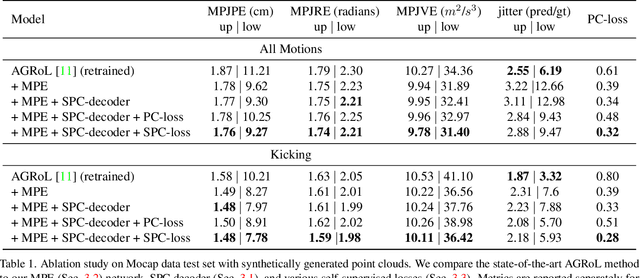
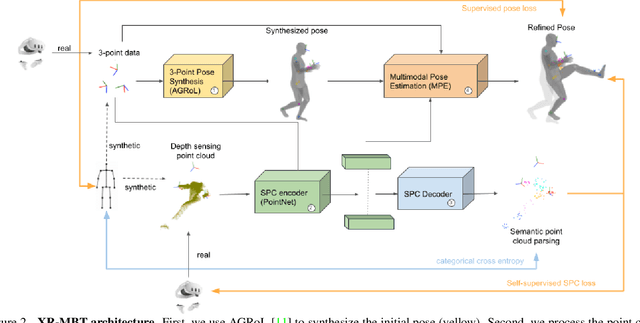

Abstract:Tracking the full body motions of users in XR (AR/VR) devices is a fundamental challenge to bring a sense of authentic social presence. Due to the absence of dedicated leg sensors, currently available body tracking methods adopt a synthesis approach to generate plausible motions given a 3-point signal from the head and controller tracking. In order to enable mixed reality features, modern XR devices are capable of estimating depth information of the headset surroundings using available sensors combined with dedicated machine learning models. Such egocentric depth sensing cannot drive the body directly, as it is not registered and is incomplete due to limited field-of-view and body self-occlusions. For the first time, we propose to leverage the available depth sensing signal combined with self-supervision to learn a multi-modal pose estimation model capable of tracking full body motions in real time on XR devices. We demonstrate how current 3-point motion synthesis models can be extended to point cloud modalities using a semantic point cloud encoder network combined with a residual network for multi-modal pose estimation. These modules are trained jointly in a self-supervised way, leveraging a combination of real unregistered point clouds and simulated data obtained from motion capture. We compare our approach against several state-of-the-art systems for XR body tracking and show that our method accurately tracks a diverse range of body motions. XR-MBT tracks legs in XR for the first time, whereas traditional synthesis approaches based on partial body tracking are blind.
Avatars Grow Legs: Generating Smooth Human Motion from Sparse Tracking Inputs with Diffusion Model
Apr 17, 2023

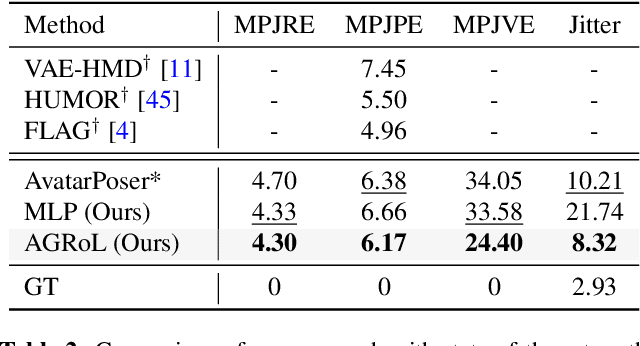
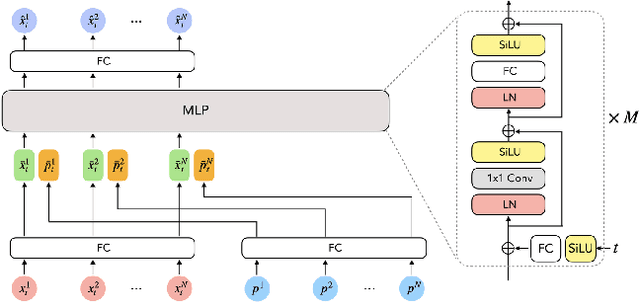
Abstract:With the recent surge in popularity of AR/VR applications, realistic and accurate control of 3D full-body avatars has become a highly demanded feature. A particular challenge is that only a sparse tracking signal is available from standalone HMDs (Head Mounted Devices), often limited to tracking the user's head and wrists. While this signal is resourceful for reconstructing the upper body motion, the lower body is not tracked and must be synthesized from the limited information provided by the upper body joints. In this paper, we present AGRoL, a novel conditional diffusion model specifically designed to track full bodies given sparse upper-body tracking signals. Our model is based on a simple multi-layer perceptron (MLP) architecture and a novel conditioning scheme for motion data. It can predict accurate and smooth full-body motion, particularly the challenging lower body movement. Unlike common diffusion architectures, our compact architecture can run in real-time, making it suitable for online body-tracking applications. We train and evaluate our model on AMASS motion capture dataset, and demonstrate that our approach outperforms state-of-the-art methods in generated motion accuracy and smoothness. We further justify our design choices through extensive experiments and ablation studies.
Real-time Virtual-Try-On from a Single Example Image through Deep Inverse Graphics and Learned Differentiable Renderers
May 12, 2022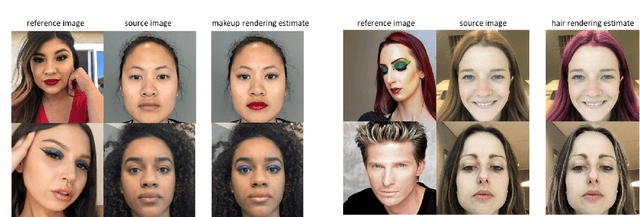
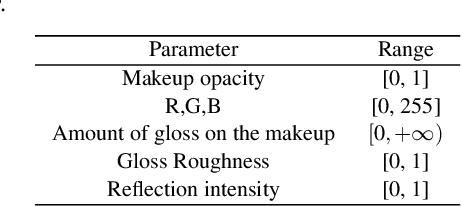
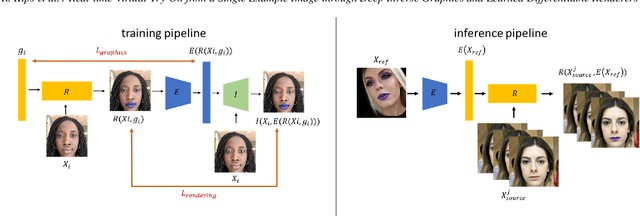
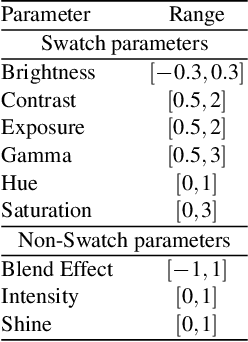
Abstract:Augmented reality applications have rapidly spread across online platforms, allowing consumers to virtually try-on a variety of products, such as makeup, hair dying, or shoes. However, parametrizing a renderer to synthesize realistic images of a given product remains a challenging task that requires expert knowledge. While recent work has introduced neural rendering methods for virtual try-on from example images, current approaches are based on large generative models that cannot be used in real-time on mobile devices. This calls for a hybrid method that combines the advantages of computer graphics and neural rendering approaches. In this paper we propose a novel framework based on deep learning to build a real-time inverse graphics encoder that learns to map a single example image into the parameter space of a given augmented reality rendering engine. Our method leverages self-supervised learning and does not require labeled training data which makes it extendable to many virtual try-on applications. Furthermore, most augmented reality renderers are not differentiable in practice due to algorithmic choices or implementation constraints to reach real-time on portable devices. To relax the need for a graphics-based differentiable renderer in inverse graphics problems, we introduce a trainable imitator module. Our imitator is a generative network that learns to accurately reproduce the behavior of a given non-differentiable renderer. We propose a novel rendering sensitivity loss to train the imitator, which ensures that the network learns an accurate and continuous representation for each rendering parameter. Our framework enables novel applications where consumers can virtually try-on a novel unknown product from an inspirational reference image on social media. It can also be used by graphics artists to automatically create realistic rendering from a reference product image.
Hair Color Digitization through Imaging and Deep Inverse Graphics
Feb 08, 2022



Abstract:Hair appearance is a complex phenomenon due to hair geometry and how the light bounces on different hair fibers. For this reason, reproducing a specific hair color in a rendering environment is a challenging task that requires manual work and expert knowledge in computer graphics to tune the result visually. While current hair capture methods focus on hair shape estimation many applications could benefit from an automated method for capturing the appearance of a physical hair sample, from augmented/virtual reality to hair dying development. Building on recent advances in inverse graphics and material capture using deep neural networks, we introduce a novel method for hair color digitization. Our proposed pipeline allows capturing the color appearance of a physical hair sample and renders synthetic images of hair with a similar appearance, simulating different hair styles and/or lighting environments. Since rendering realistic hair images requires path-tracing rendering, the conventional inverse graphics approach based on differentiable rendering is untractable. Our method is based on the combination of a controlled imaging device, a path-tracing renderer, and an inverse graphics model based on self-supervised machine learning, which does not require to use differentiable rendering to be trained. We illustrate the performance of our hair digitization method on both real and synthetic images and show that our approach can accurately capture and render hair color.
Deep Graphics Encoder for Real-Time Video Makeup Synthesis from Example
May 12, 2021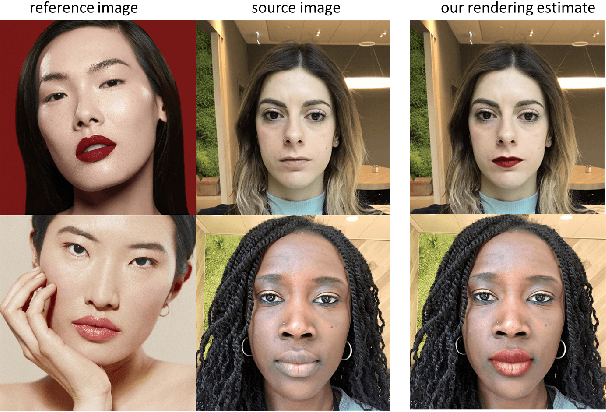
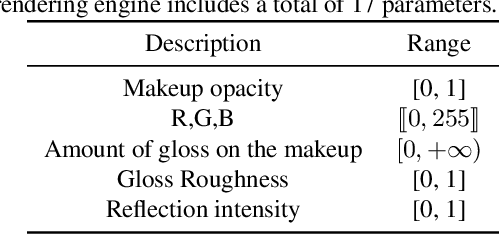


Abstract:While makeup virtual-try-on is now widespread, parametrizing a computer graphics rendering engine for synthesizing images of a given cosmetics product remains a challenging task. In this paper, we introduce an inverse computer graphics method for automatic makeup synthesis from a reference image, by learning a model that maps an example portrait image with makeup to the space of rendering parameters. This method can be used by artists to automatically create realistic virtual cosmetics image samples, or by consumers, to virtually try-on a makeup extracted from their favorite reference image.
Learning Long-Term Style-Preserving Blind Video Temporal Consistency
Mar 12, 2021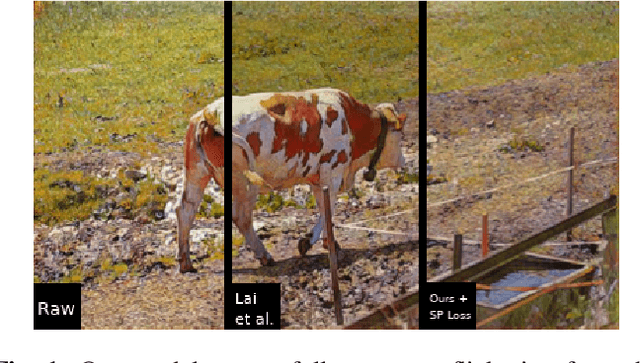
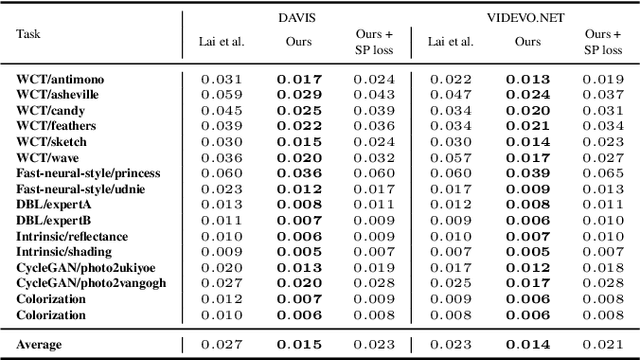
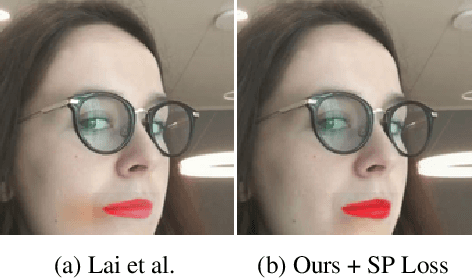
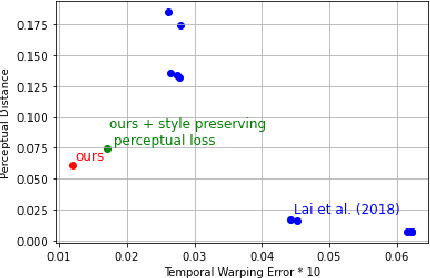
Abstract:When trying to independently apply image-trained algorithms to successive frames in videos, noxious flickering tends to appear. State-of-the-art post-processing techniques that aim at fostering temporal consistency, generate other temporal artifacts and visually alter the style of videos. We propose a postprocessing model, agnostic to the transformation applied to videos (e.g. style transfer, image manipulation using GANs, etc.), in the form of a recurrent neural network. Our model is trained using a Ping Pong procedure and its corresponding loss, recently introduced for GAN video generation, as well as a novel style preserving perceptual loss. The former improves long-term temporal consistency learning, while the latter fosters style preservation. We evaluate our model on the DAVIS and videvo.net datasets and show that our approach offers state-of-the-art results concerning flicker removal, and better keeps the overall style of the videos than previous approaches.
CA-GAN: Weakly Supervised Color Aware GAN for Controllable Makeup Transfer
Aug 24, 2020



Abstract:While existing makeup style transfer models perform an image synthesis whose results cannot be explicitly controlled, the ability to modify makeup color continuously is a desirable property for virtual try-on applications. We propose a new formulation for the makeup style transfer task, with the objective to learn a color controllable makeup style synthesis. We introduce CA-GAN, a generative model that learns to modify the color of specific objects (e.g. lips or eyes) in the image to an arbitrary target color while preserving background. Since color labels are rare and costly to acquire, our method leverages weakly supervised learning for conditional GANs. This enables to learn a controllable synthesis of complex objects, and only requires a weak proxy of the image attribute that we desire to modify. Finally, we present for the first time a quantitative analysis of makeup style transfer and color control performance.
 Add to Chrome
Add to Chrome Add to Firefox
Add to Firefox Add to Edge
Add to Edge